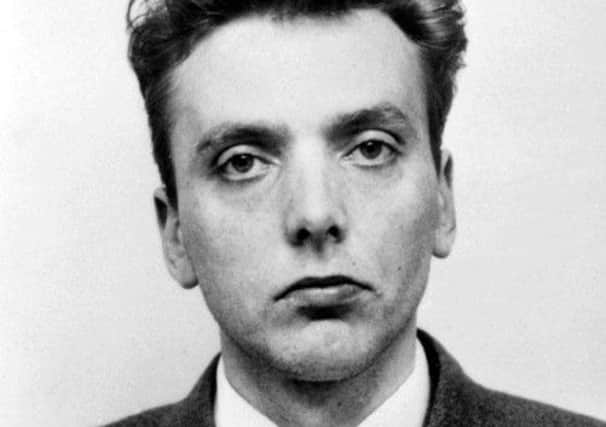Ian Brady appears in public for tribunal hearing


Brady, 75, has brought the tribunal because he wants to be judged sane so he can be transferred to a Scottish prison from maximum security Ashworth Hospital on Merseyside.
The murderer, who has been on hunger strike since 1999 and is force-fed through a tube, claims he has faked psychotic episodes in the past, the tribunal heard.
Advertisement
Hide AdAdvertisement
Hide AdThere is no precedent for feeding a prisoner on hunger strike against his will in Scotland and the tribunal heardy yesterday that Brady believes he could not be force-fed north of the Border.
The hearing was held in a room inside Ashworth and relayed by video to Manchester Civil Justice Centre where journalists and victims’ relatives watched on TV screens.
Glasgow-born Brady and partner Myra Hindley were responsible for the murders of five children in the 1960s.
During yesterday’s hearing he could be seen occasionally on screen, his pale face covered partly by metal-framed dark glasses, his wavy, greying hair in an untidy, teddy boy style.
Wearing a dark jacket, he sat hunched over, elbows on the desk in front of him, between two members of his legal team. A tube crossed his cheek, and at times he appeared to be making notes off-screen with his right hand.
He spoke briefly, in a Scottish accent, at the start of the hearing to ask about the procedure of the tribunal, but his words were mostly inaudible.
Expert witness Dr Adrian Grounds, a criminologist, told the hearing that Brady claimed he was feigning mental illness, having learned the symptoms while working as a cleaner inside Wormwood Scrubs jail and adopting “acting techniques”.
He said Brady was of the view that “he could not be force-fed” if he is moved to prison.
Advertisement
Hide AdAdvertisement
Hide AdDr Grounds said at times in the past there had been “very occasional” but “striking” episodes where Brady appeared to be hallucinating when he was talking to other people while alone in his room.
His conclusion was that evidence of psychosis was “equivocal” and, as Brady had received no treatment for such a condition, it showed they had not reached the threshold for compulsory treatment. In his opinion, Brady has a very severe personality disorder, which Dr Grounds described as “paranoid narcissistic”, which is “characterised by superiority, self-centredness, contempt, hostility”.
Dr Grounds said: “He’s spoken on a number of occasions about wanting to go to prison so he would be able to die. He has no hope of release, he’s realistic about that.”
Eleanor Grey QC, representing Ashworth Hospital, which opposes any bid to transfer Brady to prison, cross-examined Dr Grounds. She said there had been “concerns” since 1967, that Brady had been suffering from psychotic symptoms, possibly since his teens.
Brady and Hindley lured children and teenagers to their deaths, with victims sexually tortured before being buried on Saddleworth Moor above Manchester.